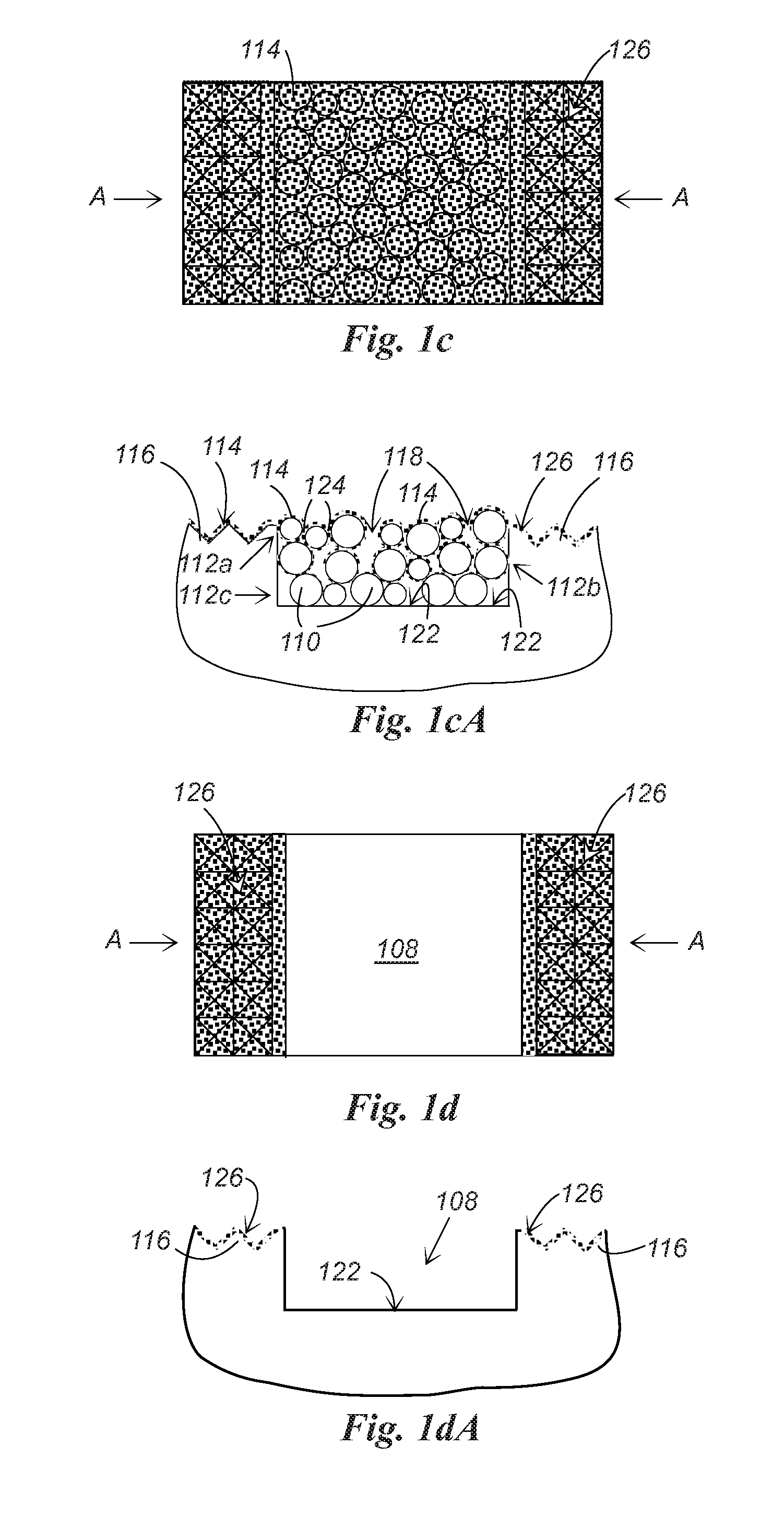Porous lift-off layer for selective removal of deposited films
- Summary
- Abstract
- Description
- Claims
- Application Information
AI Technical Summary
Benefits of technology
Problems solved by technology
Method used
Image
Examples
example
[0037]FIGS. 1a, 1b, 1c, 1d and 1e, and their respective cross-sections FIGS. 1aA, 1bA, 1cA, 1dA and 1eA show a method disclosed herein applied to blocking the deposition of a silicon nitride antireflection coating 114 (FIGS. 1c and 1cA) on the front 104 of a silicon solar cell 102. In this case, a slurry (not shown) of 1-2 micron diameter spherical silica powder particles 110 can be prepared in water with Polyethylenimine (PEI) as a dispersant. A typical slurry composition is approximately 1:1 water:silica by weight with 0.03 parts by weight of PEI as a dispersant. Many other polymeric dispersants are known in the art for dispersing silica, such as an ammonium salt of a polyelectrolyte, for example, as sold under the tradename Duramax 3005, from Rohm and Haas, of Philadelphia, Pa. Silica can also be dispersed electrostatically—by controlling the pH of the slurry. (Rather than silica, the powder in the slurry could be, alumina, silicon carbide, silicon nitride and other ceramic mater...
PUM
 Login to View More
Login to View More Abstract
Description
Claims
Application Information
 Login to View More
Login to View More - R&D
- Intellectual Property
- Life Sciences
- Materials
- Tech Scout
- Unparalleled Data Quality
- Higher Quality Content
- 60% Fewer Hallucinations
Browse by: Latest US Patents, China's latest patents, Technical Efficacy Thesaurus, Application Domain, Technology Topic, Popular Technical Reports.
© 2025 PatSnap. All rights reserved.Legal|Privacy policy|Modern Slavery Act Transparency Statement|Sitemap|About US| Contact US: help@patsnap.com



